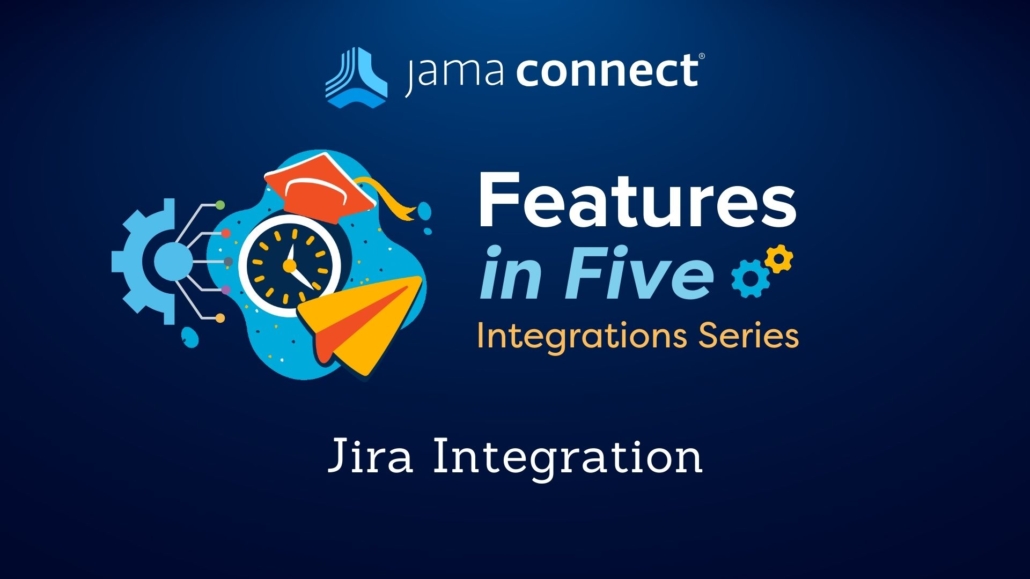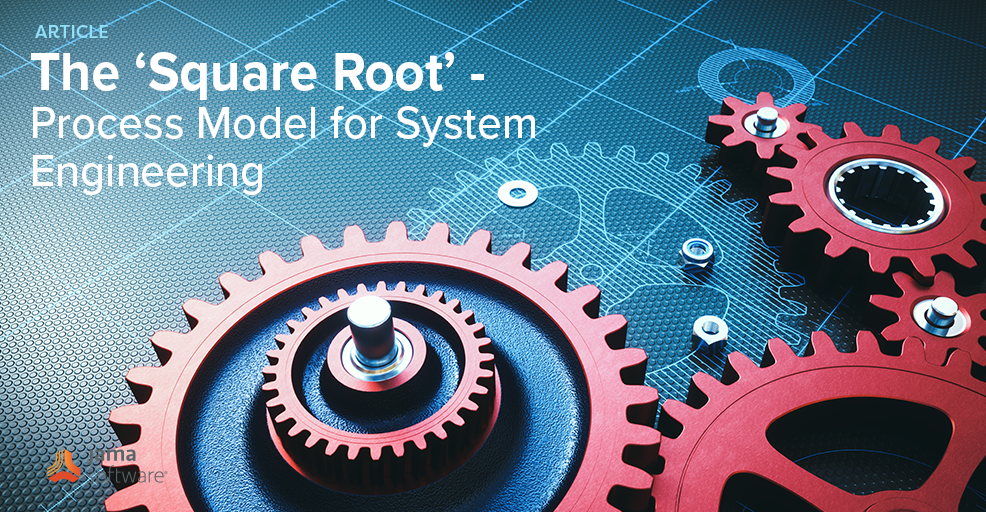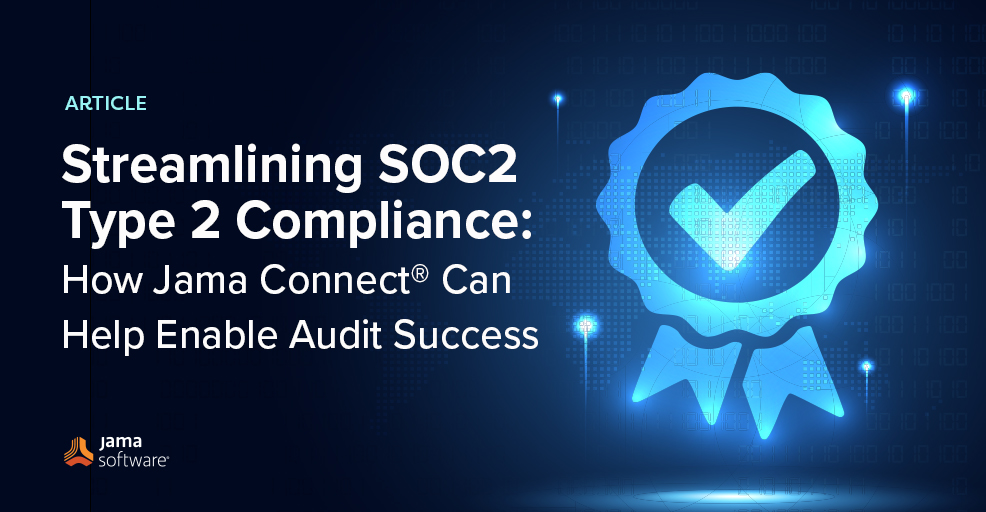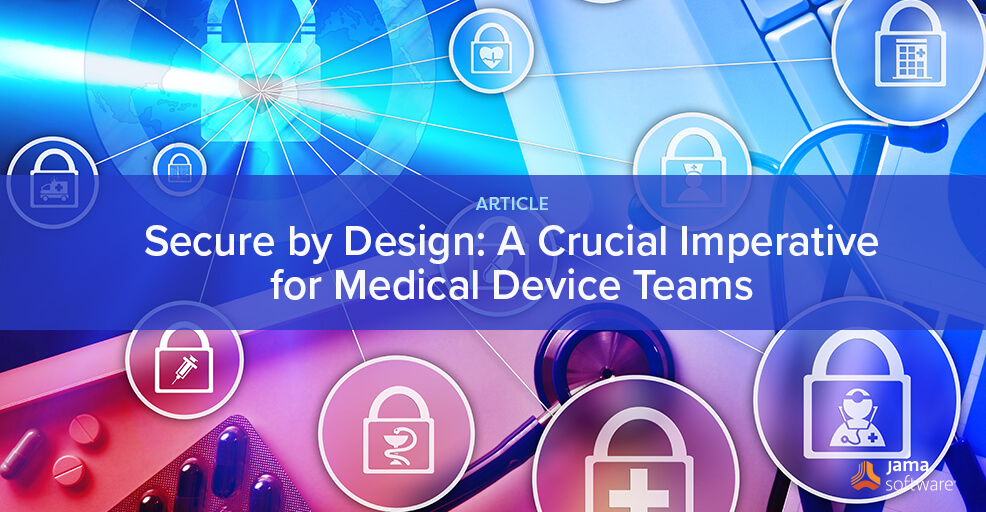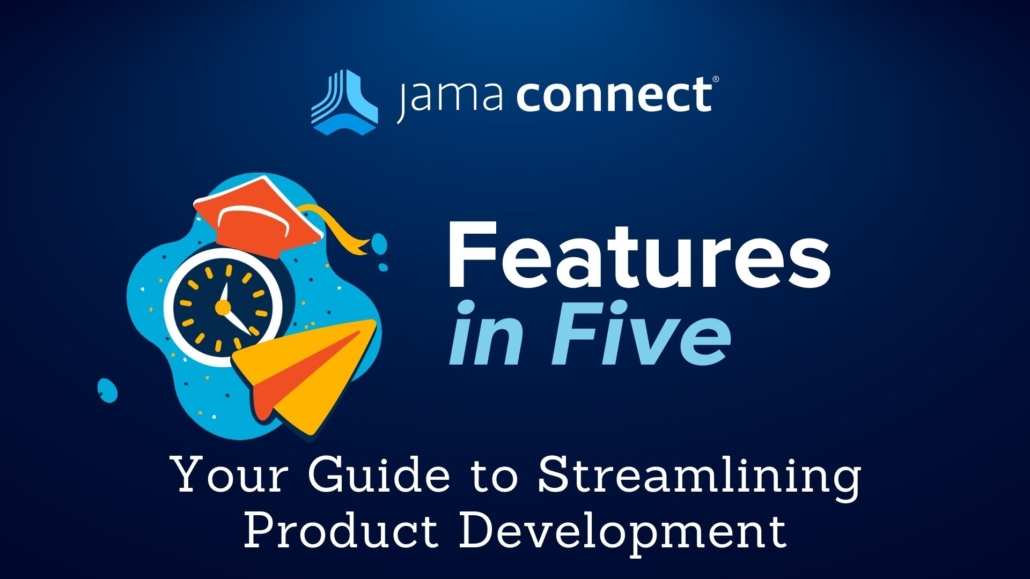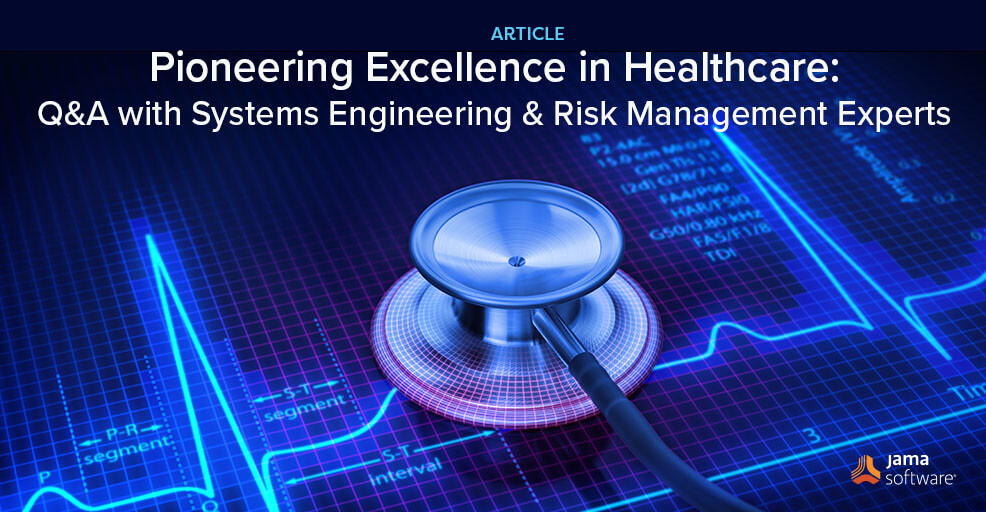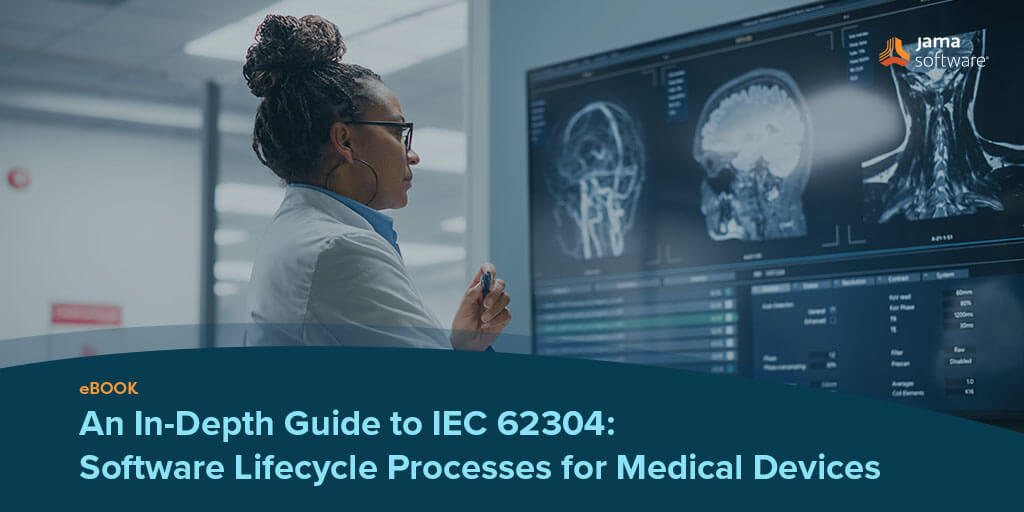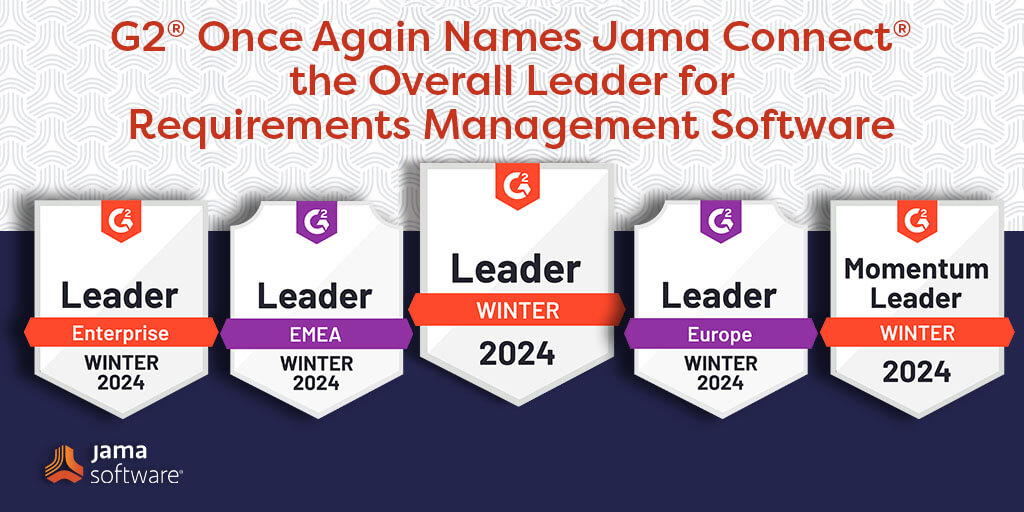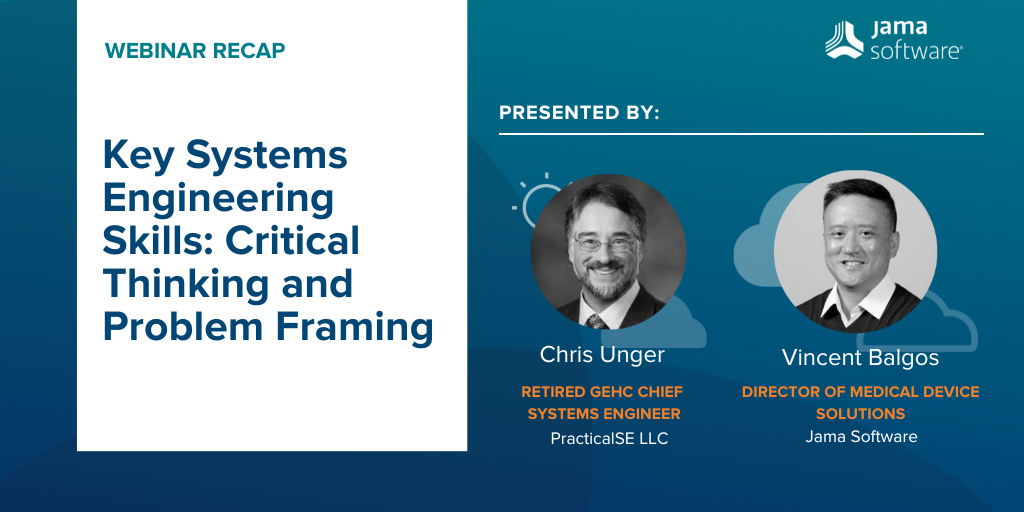
In this blog, we recap our webinar, “Key Systems Engineering Skills: Critical Thinking and Problem Framing” – Click HERE to watch it in its entirety.
Key Systems Engineering Skills: Critical Thinking and Problem Framing
Elevate your team’s success by exploring the role of critical thinking in a system engineering competency model.
In this insightful session, Chris Unger, Retired GE Healthcare Chief Systems Engineering Officer and Principal at PracticalSE LLC, and Vincent Balgos, Director of Medical Device Solutions at Jama Software®, discuss how critical thinking and decision-making skills are integral to systems engineering.
In this insightful session, you will learn:
- Explore the vital role of critical thinking and decision-making in systems engineering.
- Learn practical techniques for decision framing and closure.
- Gain insight on how systems engineers should manage design decisions on a project.
- See a simple model of how and when to engage with stakeholders in design decisions.
Below is an abbreviated transcript of our webinar.
Chris Unger: We’re going to talk today about a follow-up to the last webinar, where I’m going to talk about some of the most important systems engineering skills, critical thinking, and problem framing. So, how do skills in general, and soft skills, fit into improving systems engineering? So, in prior talks, I’ve suggested you keep your processes very simple but make them effective, and that’s easy to say but hard to do. That means you have to understand the system of the SE processes, how they connect, and where the diminishing value of the processes, the source process heading off, happens. As an example, a topic could be a technical risk, or it could be a trade-off between different possible solutions. So, we want to understand how those to the risk management and the decision process interact.
In order to do that, the best systems engineers have to have really good judgment. In addition, we have to influence people. Being simplistic, hardware and software engineers design things, things do what they’re told. I know it’s oversimplified, but our deliverables are instructions on how the software and hardware engineers do things. So, the best systems engineers here have an area of depth that they’re experts in, so they bring some technical credibility. They have systems of breadth, they understand all the systems processes and how they interact, and they have great interpersonal skills. Today I’m going to focus on how you achieve a balanced and optimized design, how you focus on your cost versus risk, and doing that through basically decision making.
So, first I want to talk about the Helix Model. So, the Helix Project was a project funded by the government and, the US government, and their concern was for big aerospace and NASA projects you tend to produce a major, billion-dollar development every 10 years, and then you do 10 years of support. So, people often move on. They were worried about how you create the truly brilliant leader systems engineers from a team that may be a little bit sparse. They developed this model up here in the front and simplistically, you start with things you learn in school, how to do good mechanical engineering, electrical engineering, and software engineering techniques. You then go into an organization, and so you spend the first five years learning about your company. Things like, well, if you’re going to be doing a say glucose monitor, what does blood chemistry look like? What does a sensor look like? What’s a workflow? So, you become a good organization-specific mechanical engineer.
Then you learn about lifecycle. How do you go from womb to tomb, from customer needs to disposal and disposition with all the regulations across the world in terms of chemical safety? So, after five, maybe 10 years, you understand your domain, you understand the lifecycle and you understand your technology. What differentiates after that? What they found was the skills on the bottom half of this page, the Systems Mindset, so big picture thinking, and paradoxical mindset. You’ve all heard that joke about fast, good and cheap, pick two of the three. Well, that’s the world in which systems engineers live. We make trade-offs between things that are inherently conflicting. The other thing is, we’ve got to make decisions quickly, so you’ve got to have a flexible comfort zone. You’ve got to be willing to wait till you have the critical information but make a decision without all the information you want.
RELATED: A Path to Model-Based Systems Engineering (MBSE) with Jama Connect®
Unger: In terms of the middle column, Interpersonal Skills, just the obvious stuff as I mentioned. You’ve got to influence the other engineers to make a good decision. Then finally here in Technical Leadership, balanced decision-making, and risk-taking. So, I had a general manager one time say, “We’re in the business of managing risks, not avoiding risks.” The least-risk program is also a boring one, but you also don’t want to take moonshots and everything. So, you really want to balance. It’s another case of a paradoxical mindset. Balance risk-taking with hitting a schedule predictably. So, these are the kinds of skills that really differentiate as systems engineering leaders, 10 to 15 years into your career. I’m going to talk more about these, decision-making, stakeholder management, and barrier-breaking.
So, I put together a very simple Systems Engineering Competency Model. I started with the NASA handbook and the NASA lifecycle. I simplified it, into that they had scope and requirements management separated, and I actually agree with those being different. But in reality, on the size of programs that we typically implemented, the people who did one typically did the other. Same thing, the architecture and the design, those were typically the same people. So, you have the upfront design, you have implementation. So, managing the subsystems actually do the implementation of what the design asks them to do, and you integrate it, such that you find your defects early. Then you manage all the lifecycle, the serviceability, manufacturability, disposability, and all the “ilities.”
Then leadership, obviously, there the interpersonal skills. This was developed for GE Healthcare, so I just picked it from our existing leadership skillset and I simplified it. What you’ll notice here is I put down at the bottom, critical thinking, as a technical skill. For many executives, and for other functional engineers, critical thinking is important, but as I mentioned, since we deliver instructions and designs to other engineers, framing decisions, taking vague things from product management and marketing, and turning them into clearer problems or functions to solve, I consider that a core technical excellence of systems engineering. But that’s vague. How do I actually measure that? So, I came up with this fairly simple set of observable behaviors. So, first of all, framing problems takes an ambiguous problem identifies the critical stakeholders, and turns them into a clear problem a more junior engineer can solve.
So, first, let’s talk about framing the problem. Even an entry-level person has to be able to understand a problem that’s been framed for them. But as you get to more senior people, the 10 to 15-year level, you have to be able to frame a complex problem, see around corners, use foresight to sort out essentials from the detail, and identify risks and emergent behavior that need to be incorporated in the decision, that other engineers might not see. Even at the strategist level, you can take a complex and ambiguous problem clarify the ambiguity, and turn it into simply just a complex and interconnected problem.
So, if we’re talking about maybe the 10 to 15-year-old person, not the most senior executives, you’ll be able to take a complex problem, identify ahead of time problems other people don’t see, and capture that. Balance cost, schedule, technical risk, and team capabilities, and make a trade-off based on sound evidence and data. Balance your intuition, when you don’t have all the data with waiting and gathering data where you need it. Then finally, making the decision is maybe the easy part. You have to make sure the team follows your leadership. Take accountability for making the right decisions, delegate where you can, and then ensure that the entire team buys into the decisions that the team or you have made. So, that’s the theory.
RELATED: Traceable Agile™ – Speed AND Quality Are Possible for Software Factories in Safety-critical Industries
Unger: Let’s talk about how we manage design decisions. First of all, why? Why is this a critical skill? By identifying the critical design decisions, it allows the team to focus on the most important thing, and separate out the core from the distractions. It helps teams identify work items. So, for example, one time when I was working with the ultrasound team in Japan, we had a bunch of really experienced engineers and they were working on a new ultrasound probe. It had moved an active component into the probe and there was a thermal issue. They were talking in Japanese for about five, 10 minutes when I was asked to frame the problem and I said, “Yeah, you’re talking too fast and too much. This is not that easy. Come back to me and tell me what you’re actually doing.”
They were figuring out how to measure the thermal properties in the lab. I said, “Well, imagine you had a probe that was safe, with maybe 39°C, but that was uncomfortable to handle. Have you worked with the application people on how much value? If you spent $50 more and took the temperature down by 1°C, would that be worth a trade-off? The team, “Oh, that’s interesting.” They were actually focused on the technical feasibility, not the real market and customer acceptance problem. So, by doing this upfront, you can make sure that you have a complete work process for the team. Then once you’ve made the decision, it minimizes rework by making sure the decisions stay closed.
Now, this decision list and prioritization should start early. It would be comfortable to wait until you know everything, but that’s too late. So, it’s a living document. Don’t wait to get started until you have enough information to make a good plan. Start with what you know, and then build out as you continue. So, one of the first things I talk about is, what is a decision? As an example, I’ve had teams come to me saying, “The operating system selection is a decision.” It’s like, “No. It’s actually not typical. It’s typically a collection of decisions.” So, I draw this little arrow here. It’s basically a decision is a point in which you select between different paths going forward and you pick one way versus another. So, deciding whether to include a stretch item in scope or not is a decision. Deciding between very specific designs and implementing a feature is a decision. Setting a critical to-quality parameter or balancing between different parameters, so cost versus reliability or cost versus performance, is a decision.
